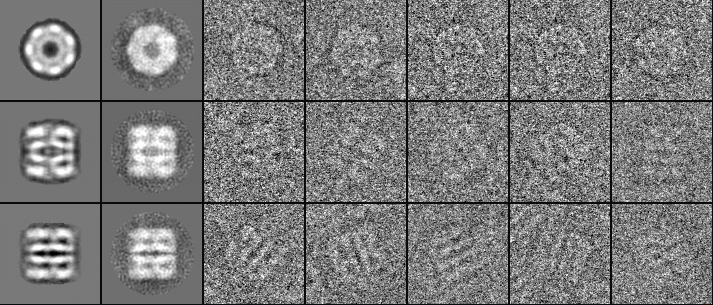
Structural biology plays critical roles in revealing the mechanisms of important cellular processes. While the majority of our structural understanding has derived from crystallography of individual molecules, increasingly it is appreciated that biological function derives from often quite dynamic molecular complexes not amenable to crystallization. A remarkable revolution is now underway in structural biology. Recent technological breakthroughs in single particle cryoEM, pioneered in part at UCSF, have enabled almost routine determination of atomic structures of a wide range of macromolecular complexes without the need for crystals. This exciting technology is paving the way for a much deeper understanding of biological machines and accelerated drug discovery.
Because it uses so little material, does not require crystals, and allows examination of multiple functional conformations, single particle cryoEM is uniquely suited for understanding the structures of biological assemblies. Native proteins are embedded in vitreous ice at liquid nitrogen temperature (Fig. 1A) and imaged directly in the EM. Images of many identical or similar molecules in random orientations are recorded (Fig. 1B) with extremely low electron doses because of the sensitivity of biological samples to radiation damage. Consequently, it is necessary to align and average 10 4 ~ 10 6 individual particle images to obtain a 3D reconstruction, which is improved iteratively by refining geometric orientation parameters for each particle to high accuracy and aberration parameters to correct each image (Fig. 1C). New detectors combined with image processing software that corrects for beam-induced sample motion and allows sample heterogeneity to be sorted out have led to the so called “resolution revolution”, where it is now practical to obtain maps at sufficient resolution to directly interpret the atomic structure. At UCSF there are now 3 groups that specialize in cryoEM (Agard, Cheng, Frost) and numerous others that are now utilizing it to tackle central problems in biology.
Figure 1. Single-particle cryoEM. A: Protein complexes are embedded in vitreous ice in random orientations. The 5 geometric parameters are determined iteratively. B: A typical image of frozen hydrated T20S proteasome. C: A 3.3 Å 3D reconstruction of T20S. D: Side chain densities are well defined and comparable to quality found in X-ray maps at similar resolutions.